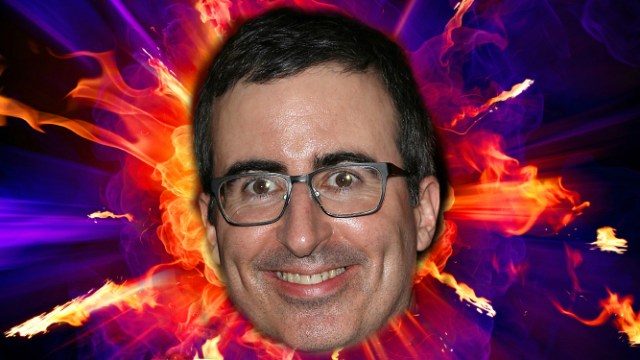Live-Blog Event: The Astonishing Simplicity Of Everything
Is everything astonishingly simple, though? Or is this a grandiose claim that falls flat when confronted with the evidence?
“My main interest is the problem of the singularity. If we can’t understand what happened at the singularity we came out of, then we don’t seem to have any understanding of the laws of particle physics.” –Neil Turok
When it comes to what the Universe is versus what it could have been in a worse-case scenario, we’ve gotten awfully lucky. Imagine a Universe where the fundamental laws of physics changed dramatically from one moment to the next; imagine a Universe where the forces, laws, constants, or interactions governing all the elementary particles would behave differently at the end of this sentence as compared to the start.
Can you even imagine what would go wrong?

Atoms would unbind themselves; planets would fly out of orbit; stars would spontaneously heat up and cool down; radiation would become more or less energetic at random; constructed materials would spontaneously self-destruct; life of any known chemical-based form would be utterly impossible.
And yet, the Universe we have is consistent, ordered, and obeys the same laws everywhere we look: at all times, in all locations, and at all energies.

Well, almost at all energies. You see, as we go to higher and higher energies, we find that a number of important, fundamental symmetries get restored, leading to a Universe that — in many (but not all) ways — is easier to understand and describe. There are known ways that this happens, such as the restoration of the electroweak symmetry, and speculative ways that this might happen, such as grand unification.

But there are also great unknowns about our Universe:
- how did inflation occur,
- how did the matter/antimatter asymmetry arise,
- what are dark matter and dark energy,
- why are the laws of physics the ones we have and not something different, and perhaps most fundamentally,
- where did space and time come from in the first place?
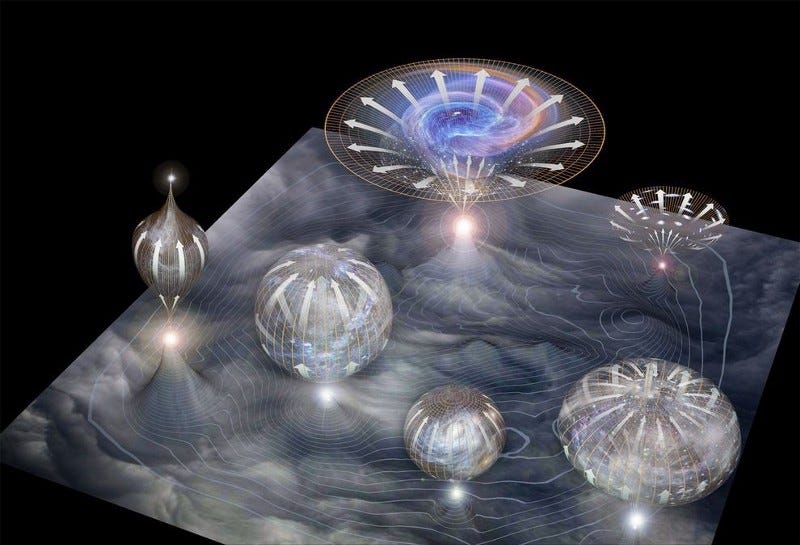
It is with a view towards these questions that we come to Perimeter Institute’s first public lecture of the new academic year, given by cosmologist Neil Turok.
Neil is an interesting character, who did tremendously valuable research that I often reference and have the utmost respect for in the 1980s and early 1990s, and was someone who bet on cosmic strings as the seeds of structure formation until the data from the COBE satellite showed it was impossible for that to be the case, instead favoring the results of inflation on the largest scales.
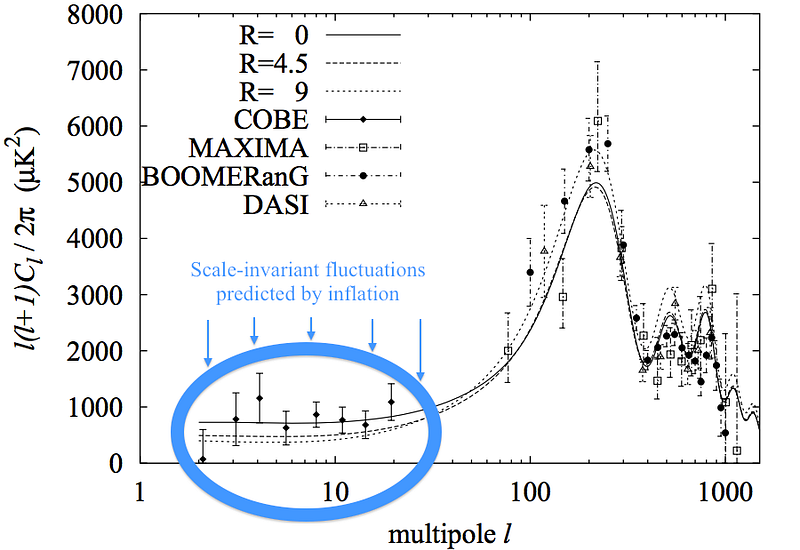
Since then, Neil’s career has taken an interesting turn, as his research has become far more speculative and has taken a very negative, some would even say nasty view of inflation. He’s very smart, very capable and has his own interesting viewpoint on things. But some of what he says, such as,
“Our existing theories are too contrived, arbitrary, ad hoc. I think we could be on the verge of the next big revolution in theory. It will be inspired by the data, by the failure of traditional paradigms. It will change our view of the universe.”
may in fact be the opposite of what reality gives us, as the traditional paradigms work indisputably well!
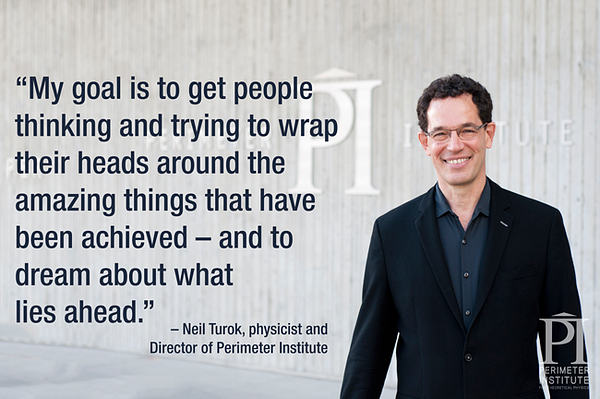
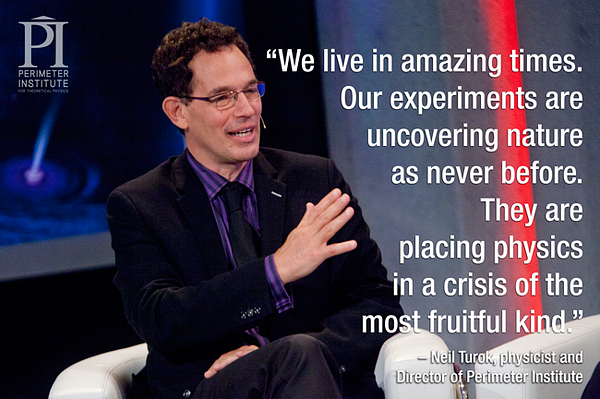
Want to hear what he has to say? Me too! But I want you to hear it with expert-level commentary, and I’m happy to (do my best to) provide it! So come on back here and tune in to the Perimeter Institute live stream below, and follow along (in a new tab/window, perhaps) as I give you the play-by-play, with updates and fact-checks every few minutes!
https://www.youtube.com/watch?v=sd4j62r7PCE
Join us October 7th at 7:00 PM EDT (4:00 PM PDT), and then catch the permanent feed (in case it’s at an ungodly hour) once its over. See you then!
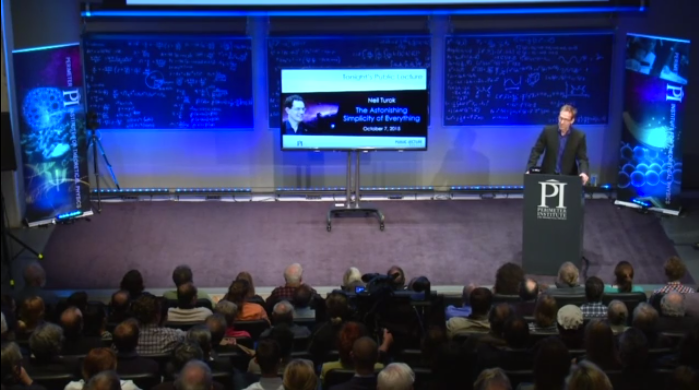
4:01 PM (PDT) Update: Here we go! The promise of the introduction is that “this talk will give us a lot to think about,” which could be amazing, focusing on the latest robust results, or more imaginative, speculative, or totally off-the-deep-end. We’re about to find out!
4:03 PM: Another great teaser: promises to be about why physics is so exciting. There are many reasons that we can’t sleep at night, and I wonder what Neil’s is: hopefully the border between what’s known and what’s not, but it could be anything at all.
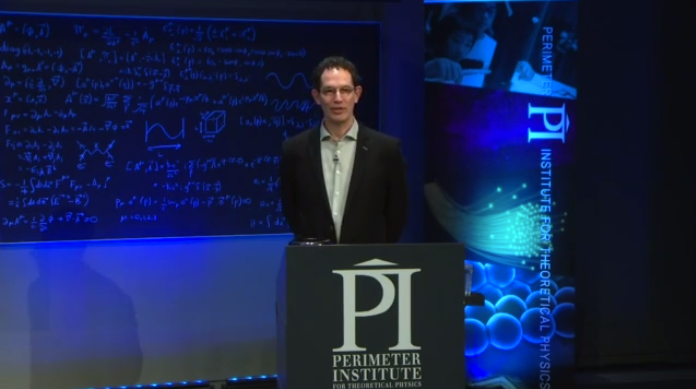
4:05 PM: Neil is extremely excited about having Art McDonald join the board of Perimeter, and this is legitimately exciting! Art just won the Nobel Prize for the discovery of neutrinos having mass, which is legitimately not only an amazing discovery, but the first hard, experimental evidence that the particles of the Standard Model must have interactions that take them beyond the Standard Model: either heavy Dirac neutrinos, a see-saw mechanism or something else!
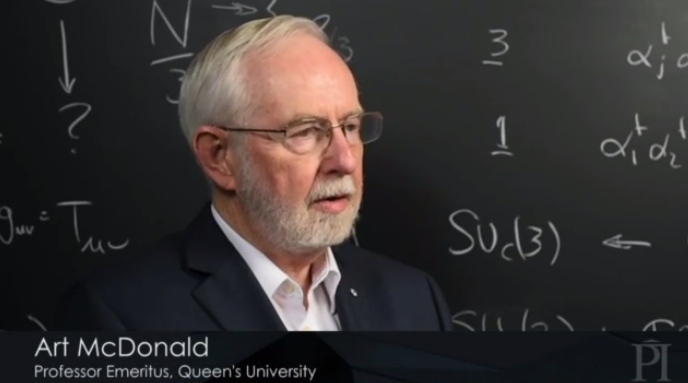
4:08 PM: Very fun, informative video tribute to Art and his neutrino research, and the results of Sudbury Neutrino Observatory. Of course, what he’s talking about goes way back to the work of Reines, Cowan and Bahcall, who deservedly won the Nobel Prize some 15 years ago for solving the solar neutrino problem. But the discovery of oscillations and masses is something else entirely, and undoubtedly Nobel-worthy on its own!
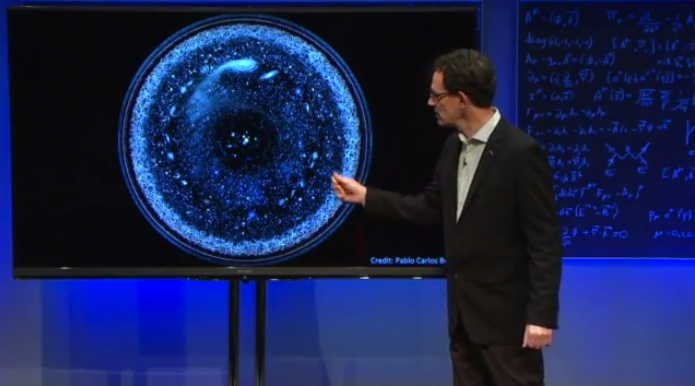
4:11 PM: Neil is promising to be careful about his definition of simplicity, which is good. As you may have guessed, I don’t think the Universe is simple at all!
He’s saying that the Universe has regular, predictable patterns that emerge, including patterns that we do not yet understand, but that definitely have order. I’m not sure I agree with that at all: the things we don’t understand are often chaotic-seeming, so I’ll have to see where this goes.
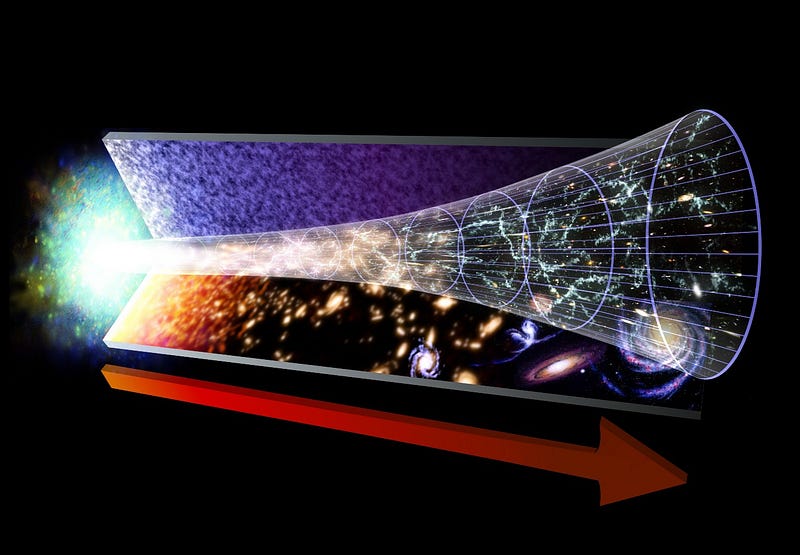
4:13 PM: Oh, the first “ouch” moment for me: he talks about “seeing back to the Big Bang, the singularity from which space and time emerged, that started it all.” Of course, there are two Big Bangs as physicists talk about them: the hot Big Bang that gave rise to the observable Universe we see, and the “singularity” that is not synonymous with that. This is not observable at all, thanks to cosmic inflation which set up the Big Bang.
Neil, of course (quite vocally) doesn’t believe in inflation, so this may be where he goes.

4:16 PM: This “dark energy” piece he talks about is interesting: that the Universe was very uniform in the distant past (immediately following the hot Big Bang), and will be very, very uniform (as in, uniformly empty) in the distant future, while it’s only “non-simple” (or non-uniform) in the middle, where we happen to live. In that sense, the Universe used to be simple, and will be again.
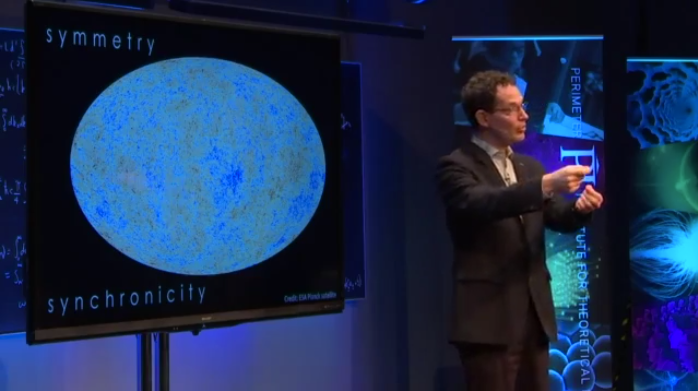
4:19 PM: And yes, the Universe is uniform (380,000 years after the Big Bang), when the CMB snapshot was taken, to only a few parts in 100,000. These temperature fluctuations are only on the order of tens of microkelvin, but the actual temperature — the uniform part that’s subtracted out (along with our motion through space) — is some 30,000 times higher.
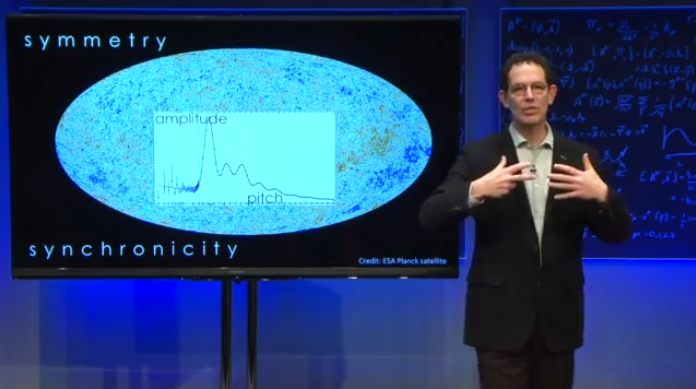
4:21 PM: He’s talking about “synchronicity” and showing this graph, above. What he means — because I don’t think it’s clear — is that these fluctuations go from “large scale” (on the left) to “small scale” on the right. They all started out with the amplitude you see on the left, but as time goes on (and information travels at the speed of light), the smaller scales begin to receive interactions from other fluctuations, and act like waves.
The “ringing” that he uses the bell as an analogy are the peaks-and-troughs of the waves you see, with the first, largest peak corresponding to the first instance of scales reaching that maximum amplitude at the Universe’s age of 380,000 years. By the way, the locations, amplitude and frequencies of these peaks tell us what percent of the Universe is normal matter, dark matter and dark energy!

4:25 PM: This is Neil’s simulation of recent work (that I haven’t seen yet) of “shocks” occurring at very high energies and very early times: well beyond what the LHC can see. I don’t know what assumptions go into this result.
4:26 PM: “The Universe has turned out to be simpler than any of our models.” Really? REALLY?! The Universe turned out to be consistent — both in cosmology and in particle physics — with all of the simplest, most conservative (with the fewest novel assumptions) models. The inflationary cosmology model known as “new inflation” proposed in 1982/1983 is perfectly consistent with what we see; the “standard model” from the 1960s gets everything (except neutrino masses) that we see. I have no idea what Neil is talking about.
Yes, theorists who dive into incredibly speculative territory and treat it as “fact” despite a lack of experimental evidence are doing some dangerously wrongheaded stuff, but everyone knows that. “Simplicity” isn’t a lack of unification or a lack of “deeper mathematical structure,” as Neil seems to imply.
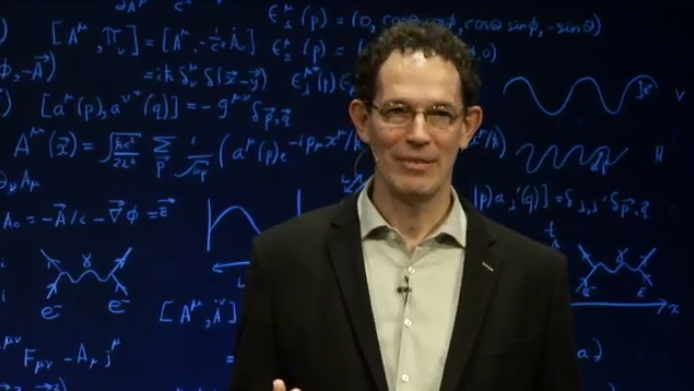
4:29 PM: Neil talks about mathematics as being simple and powerful, but the important thing that mathematics does for our Universe — for physics — is the following:
- it’s self-consistent,
- it behaves the same way at all times and in all locations,
- and it allows us to predict outcomes given a set of rules, constraints and postulates.
How fortunate we are that our Universe obeys laws like this — mathematical laws — when it comes to the physical Universe itself.
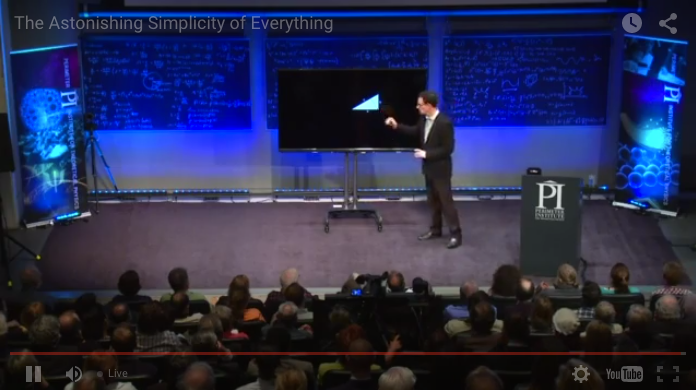
4:31 PM: Neil talks about mathematics, logic, proof, and justice. I think this is obvious but also worth saying anyway: proof isn’t necessarily rigorous and infallible under all circumstances, but rather is a way of demanding evidence so that we can convince ourselves that our conclusions are robust under the circumstances where we apply them.
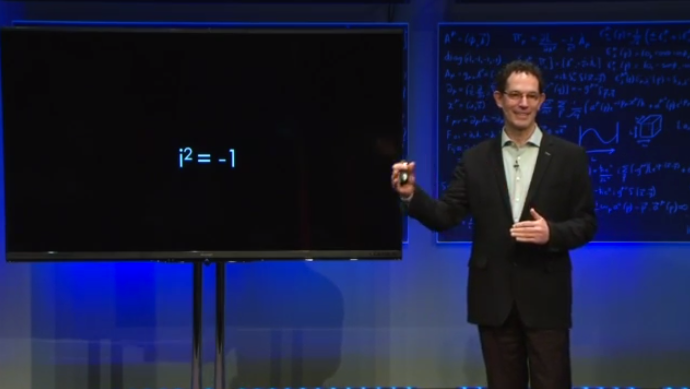
4:34 PM: Interesting that he characterizes the next mathematical leap as the development of imaginary/complex numbers. There are branches of physics (quantum mechanics) that likely wouldn’t have come about sensibly without the development of this field, where you have “real” and “imaginary” parts. Mathematically, you can extend real (where there’s one thing) to complex (where there’s two, real and imaginary) to a new structure called quaternions (where there are four “generators”) and then octonions (with eight generators), but no more than that. Mathematics is interesting!
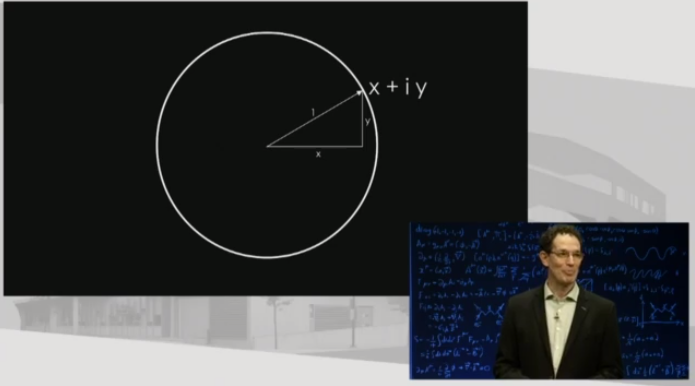
4:37 PM: Okay, best moment of the talk so far: “this i will be here for eternity,” unlike the iPhone, iPod or iPad. In your face, Steve Jobs acolytes! That’s right, this talk features an iJoke!
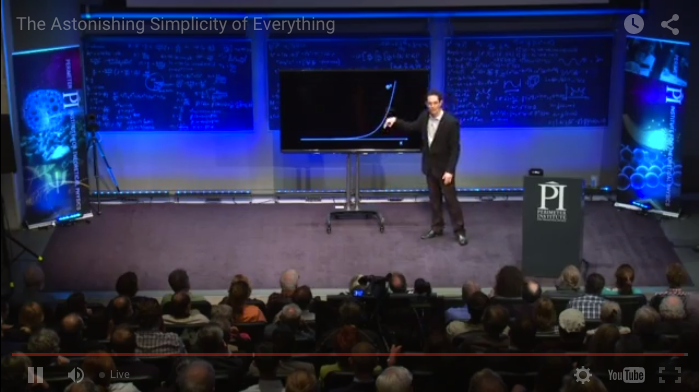
4:40 PM: So he’s introducing an exponential function now. We’ve done Pythagoras, imaginary numbers and exponentials. These are relatively simple concepts, and putting them together is going to give us the Euler identity, which is a special case (angle of 90 degrees, or pi/2) of the Euler formula:

4:42 PM: And yes, if you map it out over time, you’ll get sinusoidal, oscillatory functions based on this mathematical structure.
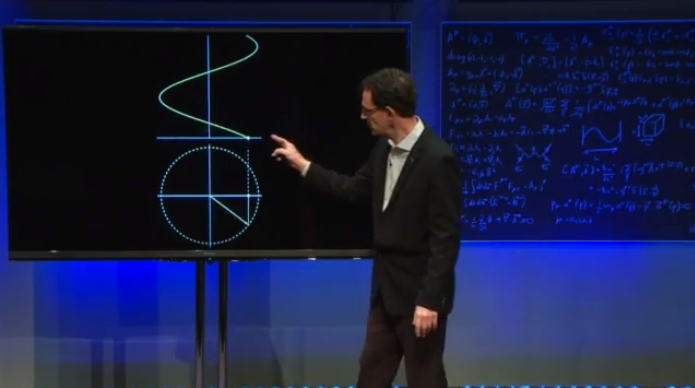
If you took physics as a high school student and tried to work out electricity and magnetism without complex numbers, there was a lot of messiness. If you did use them, it got “simpler,” I suppose, from a certain point of view. This led to unification (electromagnetism), the prediction of light and its discovery as an electromagnetic wave, and a whole host of other things.
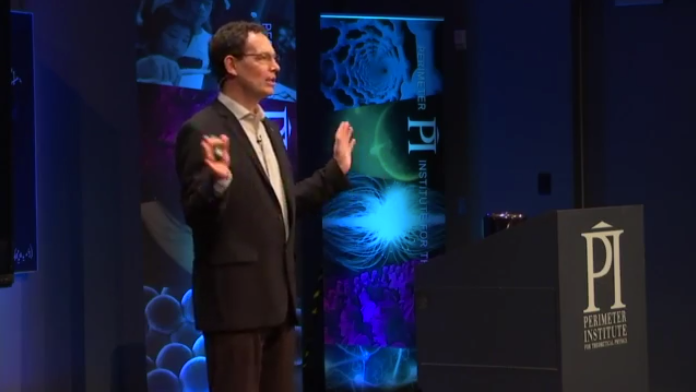
4:46 PM: Yes, it’s true that Maxwell’s equations predict no scale for electromagnetic waves, from gamma waves (arbitrarily short) to radio (arbitrarily long), but this was long suspected, as X-rays, ultraviolet waves, and infrared light had been known for nearly a century!
4:48 PM: You are a wave! Well, kind of. Quantum mechanical spreading is kind of something that only occurs if you don’t force an interaction. They say that a “watched pot never boils,” which isn’t true, although it often feels that way. But a watched atom with a long half-life will not decay, as its wavefunction takes time to spread out sufficiently so that it could tunnel into the low-energy state, and every interaction knocks it back to a definite state. So you are not spreading out over your life; don’t worry. (Or at least, don’t blame your waistline increasing as you age on that!)
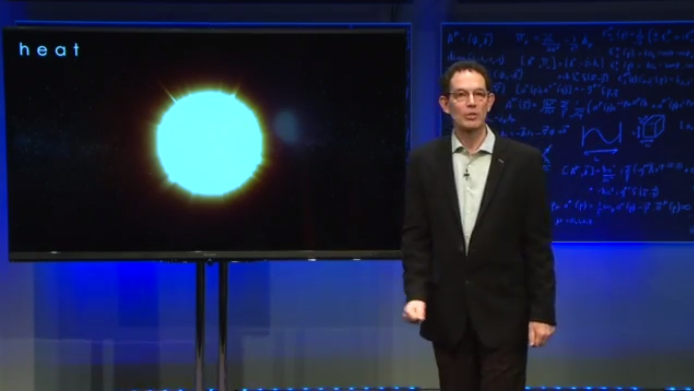
4:50 PM: Neil is now talking about short-wavelength particles and the ultraviolet catastrophe, and how the fact that photons must be particles — the quantum nature of light — that prevents the Sun and all thermal radiators from emitting an infinite amount of energy in the high-frequency domain.
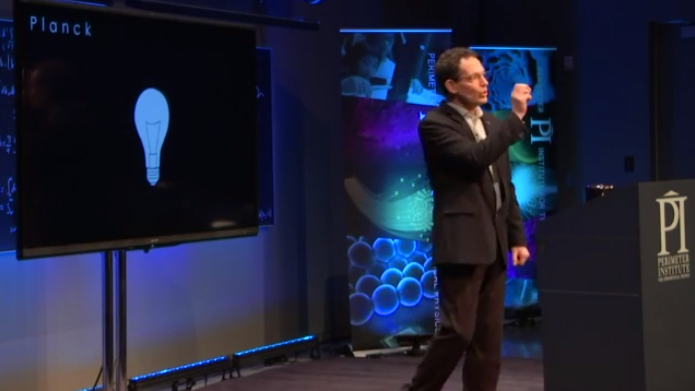
4:52 PM: Although this is a great history lesson, I’m beginning to get nervous that we’re not going to hear anything about the “astonishing simplicity” of anything other than the Euler Identity and sine waves.
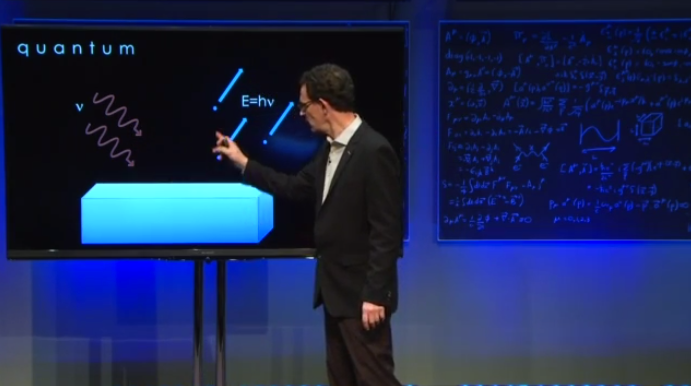
4:54 PM: A lot of people associate Einstein with either the speed of light and special relativity, spacetime and general relativity, or E = mc^2, but he actually won the Nobel Prize for the verification of Planck’s ideas and the discovery of the photoelectric effect. If you shine light of a high intensity but a low frequency, it won’t knock any electrons off. But even a single photon of the right frequency can ionize an atom/molecule. That’s the photoelectric effect, and that proves that light’s energy is quantized!
4:56 PM: Most talks start with what we know — what everyone knows — and move forward to talk about cutting-edge results. But this talk spent the first 15 minutes (starting at around the 11 minute mark) talking about cutting-edge results, and then the next half hour talking about very, very old (from 6th century B.C.E. to the 1920s) physics. How does that make you feel?

4:59 PM: “Pythagoras’ theorem works in any number of dimensions” he claims. Well, that’s kind of true. It works in any flat, uncurved 2-dimensional plane that can be embedded in any number of higher dimensions.

5:01 PM: But yes, we absolutely have to have the probability of all possible outcomes sum to 1, or your physical theory is in trouble. This is all basic quantum physics, all true, and all non-controversial. I suppose this is an interesting perspective on how to look at it, and perhaps it’s simpler than the standard way it’s taught from a certain perspective.

5:03 PM: It’s kind of interesting to think that so much of this work was done, historically, in the 1920s and 1930s, and was developed piece-by-piece by people like Bohm, Hund, Bohr, Heisenberg, Schrodinger, Pauli, Einstein, Planck, Dirac, Klein, Gordon, Proca, Schwinger, Wigner, Breit, Lipman and many, many others. On the other hand, it makes me think of General Relativity, and how Einstein — with the exception of some mathematical help — figured out the rules and laws all on his own.

5:06 PM: Thought-experiment time! This is a classic special relativity idea: you have the invariant speed of light, and a moving source. What do you see?
5:08 PM: What he hasn’t mentioned is that this “complex number” structure we gave to quantum mechanics, the one where you had a real part and an imaginary part and the sums of their squares gave you “unitarity,” or a probability of 1, also shows that same structure in relativity. Space and time have that same relationship, where space and time are complex quantities — one is real and one is imaginary — but they’re related by a constant: c, the speed of light.
And so there’s this “invariant interval” for something in motion or something at rest, and that’s how it comes together: in the same fashion. The speed of light and the speed of gravity are the same, and this mathematical structure was actually put together by one of Einstein’s former teachers, Hermann Minkowski, in 1907.
5:09 PM: Sorry, my bad; 1908! Here’s the Minkowski quote from September of that year where he put that formalism forth:
The views of space and time which I wish to lay before you have sprung from the soil of experimental physics, and therein lies their strength. They are radical. Henceforth space by itself, and time by itself, are doomed to fade away into mere shadows, and only a kind of union of the two will preserve an independent reality.
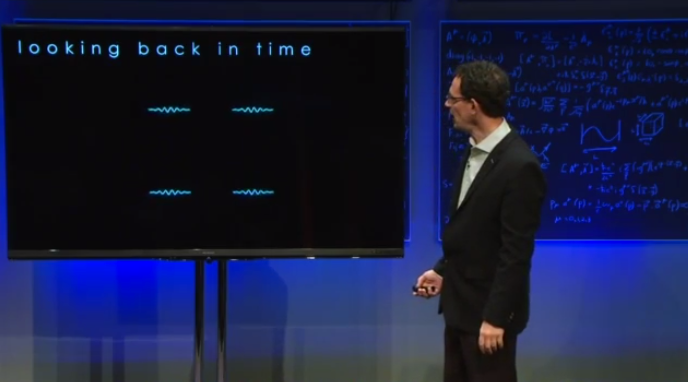
5:12 PM: If you put this in the context of General Relativity, you get the possibility of an expanding Universe, but you also didn’t need to do so; it’s just easier to see with that context present.
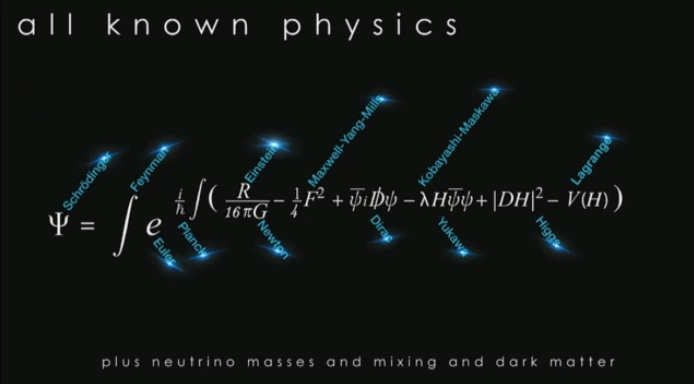
5:14 PM: Holy crap NO NO NONONOOOO! Sure, throw all of known physics into a single equation: you can do it! So long as:
- gravity is a quantum theory,
- you don’t care that there’s no strong-CP violation, baryogenesis, dark matter or neutrino masses,
- there are no new forces that aren’t accounted for,
- there are no cross-terms between these forces we haven’t discovered,
- and that all of this put together is a solvable problem.
Sure, talk about the simplicity of everything and then just gloss over all the huge assumptions that went into writing this down. It might not even make any sense at all to do so. But it’s a nice story to visualize the Universe as just a sine wave from something spinning on a circle.
5:17 PM: Also, this doesn’t answer a whole slew of questions that Neil brought up, like where did space and time come from (the initial singularity that he alluded to way back in the beginning), why do the constants have the values that they do, or whether gravity, time and/or space are themselves quantized. (The expected answers are probably, possibly and maybe.)
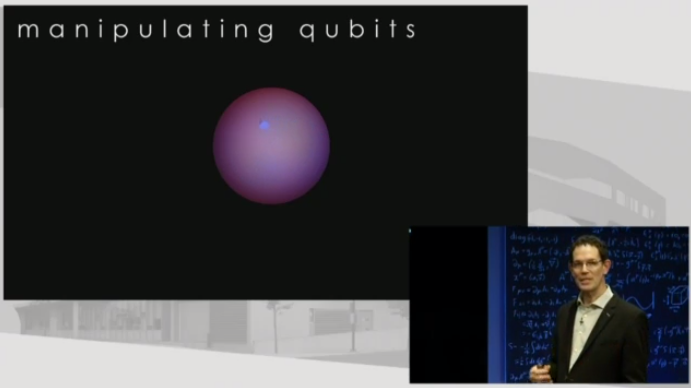
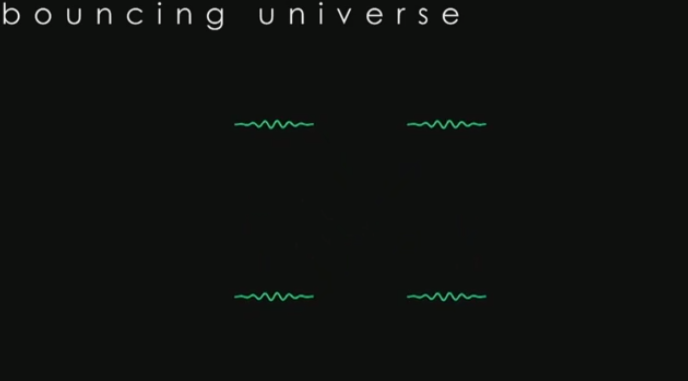
5:21 PM: So I think he’s rushing at the end, because these are just ideas, avenues of research, and of course his pet idea that we live in a bouncing Universe, that has a cyclic structure. Mathematical consistencies are nice, but they’re no substitute for an observable you can look for and use to discriminate between models.
His bouncing models — at least historically over the past more-than-a-decade — offer nothing unique. You’d think that with his snark against String Theory earlier, how it offered nothing in the way of testable evidence, he’d have more to say about his own pet model.

5:24 PM: Natural units, though, don’t really mean anything. The “natural unit” for mass is some 10^17 times heavier than the heaviest particle known. The “natural unit” for distance is 10^-35 meters; the “natural unit” for time is 10^-43 seconds. Why should the “natural unit” for vacuum energy mean anything at all?

5:26 PM: I hope his “test” that he alludes to isn’t the same prediction that’s been trotted out for a very, very long time: no gravitational waves from inflation. Because the simplest “new inflation” models make that prediction, too.
All in all, this was an interesting talk, but I don’t think it delivered on what I expected, or on what was promised. I don’t feel that anything is simple (or astounding), although it’s always nice to hear about the connections between mathematics and the development of certain historical fields in physics. As far as whether things are really astoundingly simple or not: they sure don’t look like it today, and when you try to put it all together into one unified equation, it’s a total mess that doesn’t allow you to calculate anything, not unless you take the “irrelevant” parts away.
5:30 PM: Unfortunately, this is all the time I have, so I don’t have time for the full Q&A. But I hope you enjoyed this live blog, and the talk as well!
Leave your comments on our forum, and support Starts With A Bang on Patreon!





